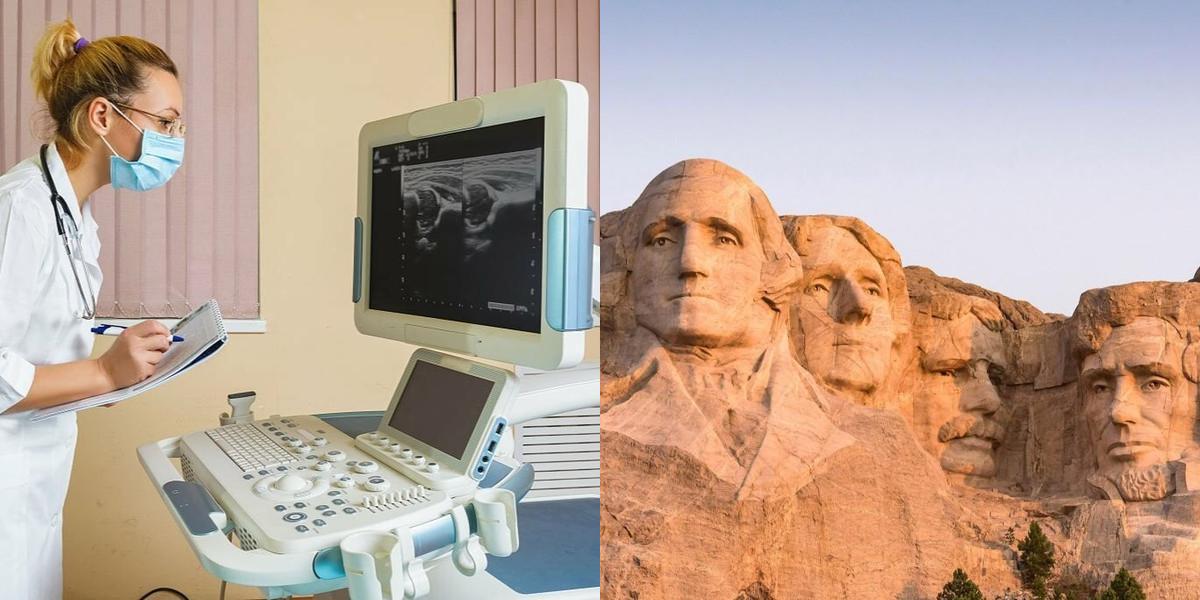What is a Diagnostic Medical Sonographer?
A diagnostic medical sonographer, also known as an ultrasound technician, is a healthcare professional who uses ultrasound technology to create images of a patient's internal organs and tissues for diagnostic purposes. They specialize in capturing images of the abdomen, pelvis, blood vessels, and fetal development in pregnant women.
Responsibilities of a diagnostic medical sonographer include:
-
Operating ultrasound equipment to capture high-quality images
-
Analyzing the images for abnormalities or signs of disease
-
Communicating findings to physicians for further diagnosis and treatment
-
Maintaining patient records and equipment
-
Ensuring patient comfort and safety during the procedure
Where does a Diagnostic Medical Sonographer work?
Diagnostic medical sonographers can work in a variety of healthcare settings, including:
-
Hospitals
-
Private clinics
-
Imaging centers
-
Physician offices
-
Maternity wards
-
Research facilities
How to Become a Medical Sonographer in South Dakota?
To become a medical sonographer in South Dakota, one must first complete an accredited sonography program, often a 2-year associate's degree. Next, they must obtain certification from the American Registry for Diagnostic Medical Sonography (ARDMS). Once certified, they can search for job opportunities in hospitals, clinics, and private practices to start earning a competitive salary.
Requirements to become a Diagnostic Medical Sonographer in South Dakota
To become a diagnostic medical sonographer in South Dakota, you must fulfill the following requirements:
Education:
-
Complete a formal education program accredited by the Commission on Accreditation of Allied Health Education Programs (CAAHEP) or the Joint Review Committee on Education in Diagnostic Medical Sonography (JRC-DMS). These programs typically result in an associate's or bachelor's degree.
-
The program should include both classroom instruction and clinical training.
Legal Requirements:
- South Dakota does not have any specific licensure or certification requirements for diagnostic medical sonographers. However, many employers prefer to hire candidates who have obtained professional certification.
Where can I find Diagnostic Medical Sonographer classes in South Dakota?
If you're looking for diagnostic medical sonographer classes in South Dakota, Dreambound is the largest platform for students to find and compare vocational training programs. Dreambound offers a comprehensive database of accredited ultrasound technician programs in South Dakota.
Dreambound can help you find classes near you by providing information on program duration, tuition costs, accreditation status, and student reviews. By using Dreambound, you can easily compare different programs and make an informed decision about your education and career path.
How do I get my Diagnostic Medical Sonographer certification?
If you are interested in pursuing a career as a Diagnostic Medical Sonographer, the first step is to obtain the necessary certification. Certification is not required in all states, but it is highly recommended as it demonstrates your competency and commitment to the field. In order to become certified, you must complete an accredited educational program and pass the certification exam.
1. Complete an accredited program: Begin by completing an accredited educational program in Diagnostic Medical Sonography. These programs typically last around two years and provide essential knowledge and skills.
2. Obtain clinical experience: Gain hands-on clinical experience through supervised rotations at hospitals or medical facilities. This practical training allows you to apply your classroom learning in real-world settings.
3. Take and pass the certification exam: Once you've completed your education and clinical experience, you'll be eligible to take the certification exam administered by a professional organization like the American Registry for Diagnostic Medical Sonography (ARDMS). Prepare thoroughly to demonstrate your knowledge and skills.
4. Continue your education: After obtaining your certification, continue your professional development through continuing education opportunities. Many states require Diagnostic Medical Sonographers to participate in ongoing learning to maintain their certification and stay updated with advancements in the field.
How do I get a job as a Diagnostic Medical Sonographer?
Once you have obtained your certification as a Diagnostic Medical Sonographer, the next step is to find a job in the field. Here are some steps you can take to increase your chances of getting hired as a sonographer.
1. Craft a strong resume: Your resume is your first impression with potential employers. Highlight your certification, education, clinical experience, and any specialized training. Tailor your resume to emphasize skills relevant to the job you're applying for, such as obstetrics or vascular sonography.
2. Network in the field: Networking is crucial. Join professional organizations, attend industry conferences, and connect with other sonographers on social media. Networking can lead to job leads, mentorship opportunities, and insights into the field.
3. Apply for jobs: Start applying for positions at hospitals, medical clinics, imaging centers, and other healthcare facilities. Customize your resume and cover letter for each application, focusing on your relevant experience and skills. Follow up on applications to demonstrate your enthusiasm.
4. Prepare for interviews: Research the facility and department you're applying to. Practice common interview questions, highlighting your clinical experience, technical skills, and patient care abilities. During the interview, show professionalism, confidence, and enthusiasm. Ask thoughtful questions to demonstrate your interest. Send a thank-you note or email afterward to express your gratitude and reinforce your interest in the position.
Career Paths and Opportunities after Becoming a Diagnostic Medical Sonographer
Becoming a Diagnostic Medical Sonographer opens up a variety of career paths and opportunities. While many sonographers work in hospitals or medical clinics, there are also opportunities in research, education, and sales. Here are some of the career paths you can pursue after becoming a Diagnostic Medical Sonographer.
Hospital or Medical Clinic: Working in a hospital or medical clinic is a common career path for Diagnostic Medical Sonographers. In this setting, you will work closely with physicians and other healthcare professionals to perform diagnostic ultrasound procedures. You may specialize in a particular area, such as obstetrics, pediatrics, or cardiology.
Hospitals and medical clinics offer stability and a variety of patient cases. You will have the opportunity to work with a diverse patient population and use a wide range of ultrasound techniques. This career path also offers opportunities for advancement, such as becoming a lead sonographer or a department manager.
Research: If you have a passion for research and technology, a career in research may be a good fit for you. Many universities and research institutions employ Diagnostic Medical Sonographers to assist with research studies and clinical trials. In this role, you may be involved in developing new imaging techniques, testing equipment, or analyzing data.
Working in research allows you to contribute to advancements in the field of diagnostic ultrasound. You may have the opportunity to collaborate with other healthcare professionals and researchers, and your work may be published in scientific journals. This career path offers a unique blend of hands-on work and intellectual stimulation.
Education: If you enjoy teaching and mentoring others, a career in education may be a good fit for you. Many sonography programs hire experienced sonographers to teach students and provide clinical instruction. In this role, you will have the opportunity to share your knowledge and experience with the next generation of sonographers.
Teaching can be a rewarding career path that allows you to make a difference in the lives of students. You will have the opportunity to stay up-to-date with the latest advancements in the field and contribute to the future of diagnostic ultrasound. This career path may require additional education and certification in teaching.
Sales and Marketing: If you have strong communication and interpersonal skills, a career in sales and marketing may be a good fit for you. Many medical equipment companies hire Diagnostic Medical Sonographers to demonstrate and sell their products. In this role, you will work closely with healthcare professionals to understand their needs and recommend the appropriate equipment.
Working in sales and marketing allows you to combine your clinical knowledge with your interpersonal skills. You will have the opportunity to attend conferences, trade shows, and other industry events. This career path offers the potential for high earnings and the opportunity to travel.






